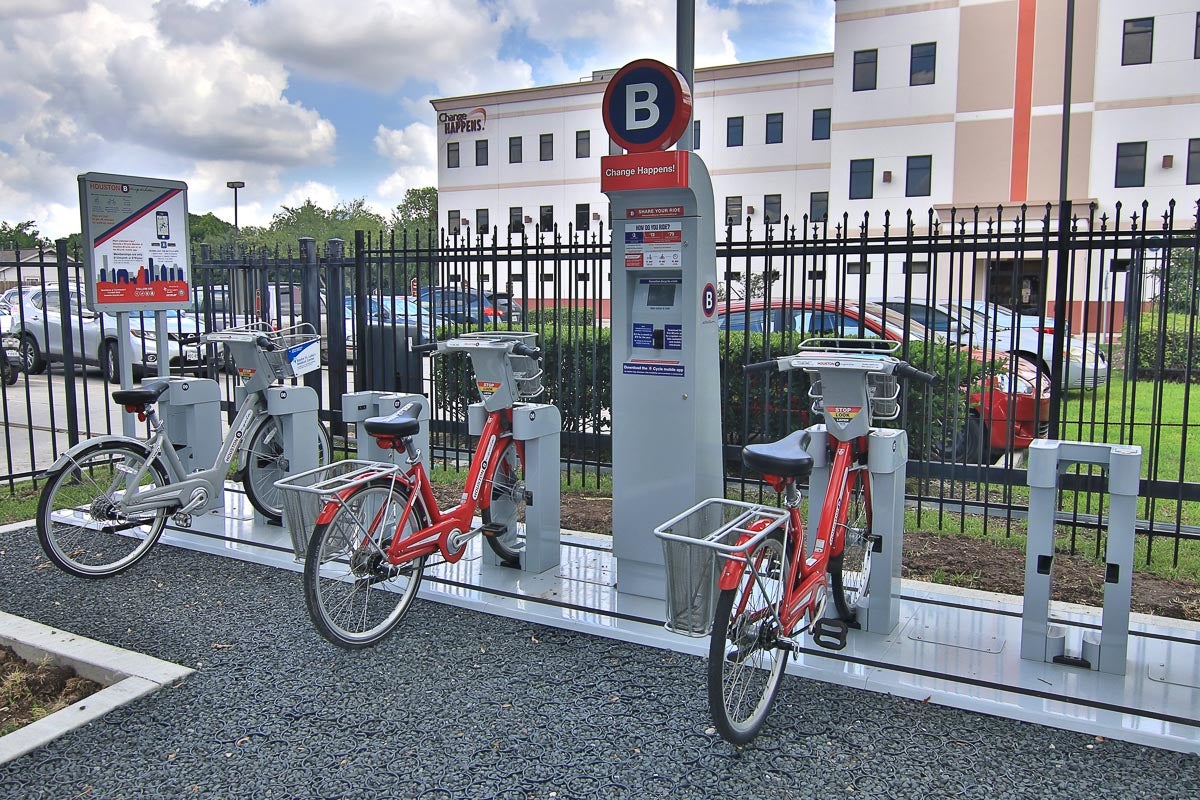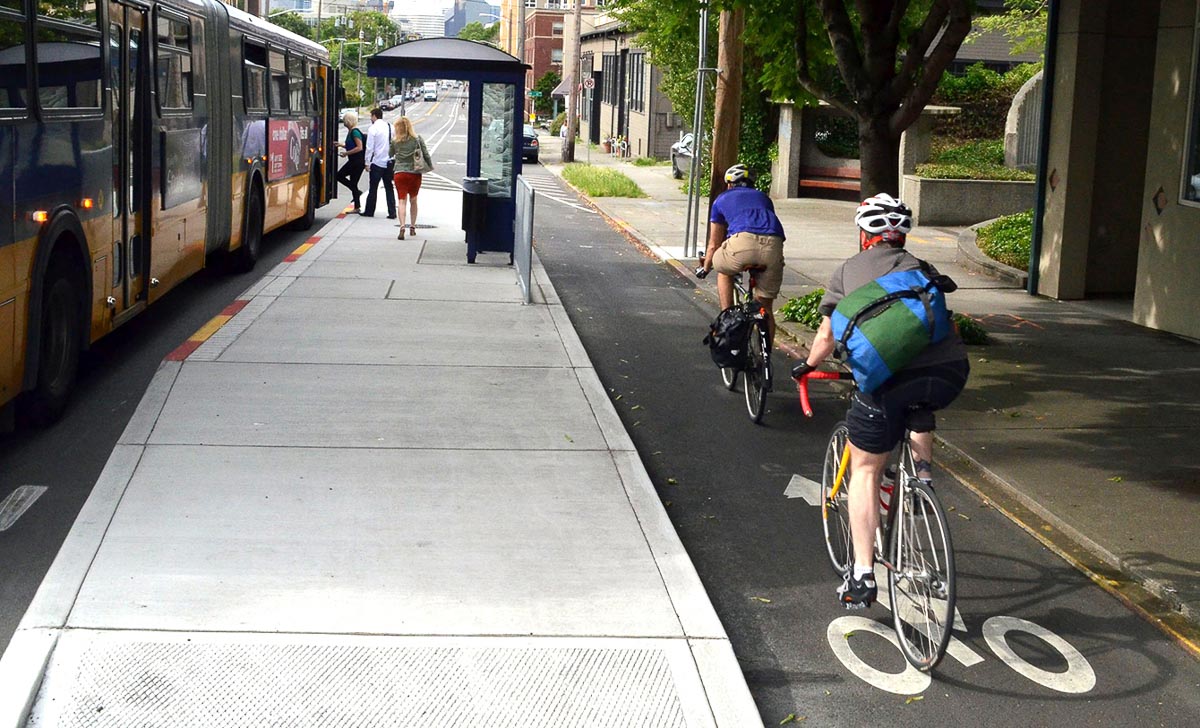The “Urban Edge Explains …” series explores issues and concepts that are important to urban planning and policy experts. Today, we look at the significance of the pedestrian experience when it comes to transit.
Some commuters are 100% committed to using public transit — whether by choice or because they don’t have the luxury of choosing, or both — to get from home to work and back again each day. Some commute by bus or rail occasionally or when they can. Regardless of why or with what frequency people take the bus or light rail, many find the dreaded first- and last-mile connections to be the biggest obstacle to doing so.
From where I live in Houston, it typically takes 15 minutes to drive to work. Add to that the 10 minutes it takes me to walk to my building from where I park, and it’s roughly a 25-minute commute. If I take the bus or rail, I’m looking at a commute time that ranges from 50 minutes to a little over an hour, including 20 minutes of walking — 10 from home to bus stop or light rail station and 10 from stop or station to my office. In short, that’s 50 minutes a day to car commute, with 30 minutes spent in the car, or 100 or minutes to take public transit, spending 60 minutes on the bus or train.
Personally, the extra time spent not driving isn’t as much of a deterrent to taking transit as just getting to the bus stop. The strength of the deterrent effect can fluctuate depending on the time of day.

The BCycle bike-share program provides Houstonians with micromobility options.
Pedestrian improvements make transit better
Not everyone is fortunate enough to live a 10-minute walk from the nearest transit stop. And, in general, the threshold for the distance people are willing to go to reach a bus stop or train station is a mile. In Houston, the continuing expansion of BCycle’s bike-share business certainly makes life more convenient for many transit riders but not everyone using METRO has access to this micromobility. When we talk about transit experience, it’s important to consider the entire commute — the speed and convenience of bus and rail service as well as how safely and easily people can reach the stop or station.
Transit researcher Steven Higashide emphasizes the direct relationship between transit experience and the pedestrian experience. It doesn’t matter how fast, frequent and on time the buses run if riders have to cross unsafe roads to reach a bus stop that’s not sheltered, then wait on the side of the road without protection from traffic.
So, let’s look at what can be done to improve the “pedestrian experience,” which should be thought of as pedestrian safety or pedestrian mobility, in cities where planning has often revolved around cars instead of people.
Writer Steven Higashide will discuss his book, “Better Buses, Better Cities,” at Urban Reads on Feb. 12.
Pedestrians and cyclists are the victims in one out of five traffic deaths.
In 2018, 6,283 pedestrians were killed in traffic crashes — the most since 1990 — and a 3% increase over 2017.
Texas had the third-highest number of pedestrian accidents in the U.S. between January and June 2018. There were 298 deaths in that time, a 12% increase from that period in 2017.
In its most recent ratings, Walk Score gave Houston an overall walkability score of 48, making it the No. 21 among large American cities. Walk Score summarizes Houston as “a commuter’s town, you may find a walkable neighborhood but most likely still have to drive to work.” The city’s most-walkable neighborhoods, according to Walk Score are Montrose (85), Midtown (83) and Greenway-Upper Kirby (76).
Streets are public spaces too
In his book, “Better Buses, Better Cities,” Higashide writes about the spatial access buses provide and points out they are public spaces. According to Higashide: “How transit agencies seek to ensure safety for bus riders, how they charge for access, and for whom the service feels intuitive affects which riders feel welcome on the bus and which are excluded.”
Some may not think of buses, trains and light rail as public spaces, if they think of them at all. And it’s unclear if certain drivers realize roads and streets are public spaces, given the way they drive. In fact, streets make up 80% of the public space in cities.
Raising drivers’ awareness of pedestrians, in general, is an important priority.
The City of Houston’s Complete Streets and Transportation Plan calls for “city streets to provide safe, accessible and convenient use by pedestrians, motorists, public transit riders and bicyclists.”
One of these things is not like the others and the degree of vulnerability varies among these groups, but let’s just assume they mean safety for everyone.
In the Gulfton neighborhood, the initiative helped identify improvements needed to increase pedestrian and bicyclist safety. The city’s decision to take action in the area was prompted, in part, by Kinder Institute research. As a result, Houston Public Works has designated $500,000 for fixes such as signalized pedestrian crossings, wider sidewalks, new curbs, bigger bus shelters and designated bike safety lanes. The funds are also meant for “traffic calming” measures on long stretches of road between traffic lights and a possible reduction in vehicle lanes in some parts of the area.
The Planning and Development Department is supposed to come up with a pedestrian plan for the city this year.
Houston has a need, a need for less speed
There’s a reason you see so many yard signs in Houston neighborhoods instructing drivers to “Drive like your kids live here.” It’s simple and effective in making drivers aware of their speed, which can be enough to slow them down.
New York has implemented neighborhood slow zones where speed limits are lowered from 25 mph to 20 mph. The goal is to reduce the number of traffic accidents and their severity. A number of other cities are hoping to make streets safer by slowing the speed of traffic.
There many approaches that help in calming traffic, such as road diets (11th Street in the Heights) and lane narrowing.

Bike parking at bus stops promotes intermodal connectivity for transit riders.
Photo by Flickr / NACTO
Sidewalks, shelters and other enhancements
Access to well-maintained, highly connective sidewalks is vital to pedestrian safety and encourages people to walk more.
“If there’s no sidewalk, if there’s no shelter, it’s not going to be a great transit experience,” Higashide says. “Transit agencies don’t control sidewalk funding, typically, but there’s an incredibly clear and important connection. And so thinking about what transit agencies and what local government can do to (address the deficiencies) is so important.”
Research shows wait times can feel much longer than they actually are at bus stops without benches or shelter from rain, snow and sun.
Bike parking at stops and stations boosts intermodal connectivity by providing cyclists a secure place to park their bike and take the bus or train.
Increasing ridership requires convincing more people to take public transit and enabling more people to access it. Investments that improve the experience of riders before and after using transit are necessary to accomplish this. By working together, cities and transit agencies can make taking the bus or train safer, easier and more attractive.
If there are topics or issues you’d like to see covered in the “Urban Edge explains …” series, we’d love to hear from you. If you’d like to share your thoughts, please send us an email.

